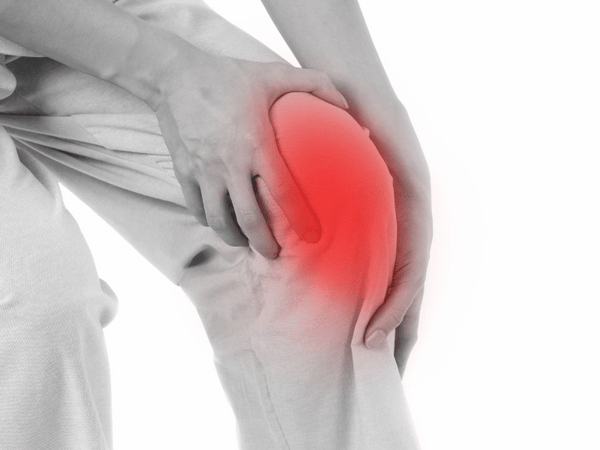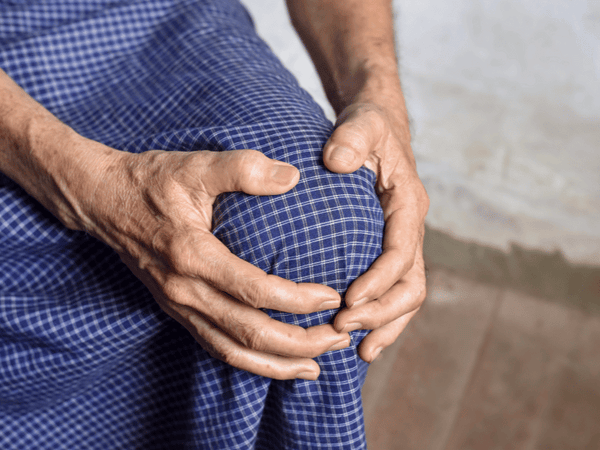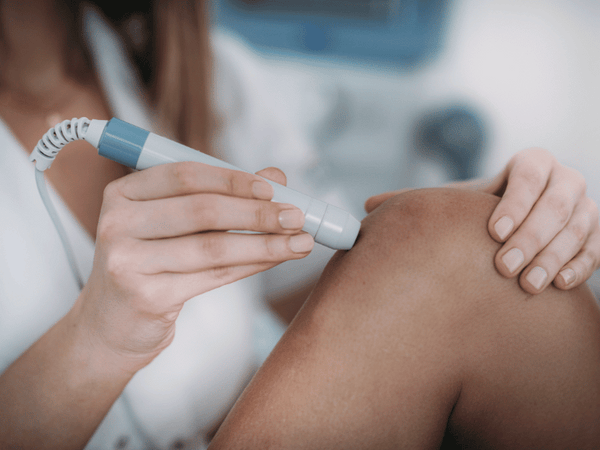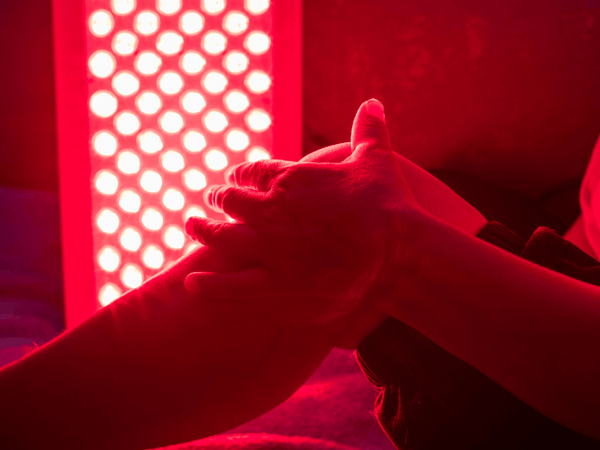
Laser Therapy For Knee Pain
Knee pain is a prevalent issue affecting individuals of all ages. It can be caused by a variety of factors, including injury, arthritis, and overuse. While traditional treatments to relieve pain, like medication and physical therapy, are common, many are turning to alternative therapies for relief. One such treatment is laser therapy, a non-invasive technique that uses light to alleviate pain and inflammation.
This comprehensive guide will explore laser therapy for knee pain, including its benefits, treatment process, and effectiveness. Whether you're a patient seeking relief from chronic pain or a healthcare professional exploring treatment options, this article will provide valuable insights into this innovative therapy.
Understanding Knee Pain
Knee pain is a common complaint that can be caused by a wide range of factors. It can stem from acute injuries, such as a torn ligament or meniscus, or chronic conditions like arthritis or tendinitis. Understanding the underlying cause of knee pain is crucial for effective treatment.
Common causes of knee pain:
1. Injuries:

These can include ligament tears (ACL, MCL), meniscus tears, and fractures.
2. Arthritis:

Osteoarthritis and rheumatoid arthritis are common culprits for managing pain.
3. Overuse:

Repetitive motions can lead to conditions like patellar tendinitis.
4. Inflammation:

Bursitis is an inflammation of the bursae, small fluid-filled sacs that cushion the knee joint.
Symptoms Associated with Knee Pain:
-
Swelling and stiffness
-
Redness and warmth to the touch
-
Weakness or instability
-
Popping or crunching noises
-
Inability to fully straighten the knee
Impact of Knee Pain on Daily Life:
Knee pain can significantly impact a person's quality of life, making it difficult to perform everyday activities such as walking, climbing stairs, and standing for extended periods of time. It can also limit a person's ability to participate in sports or other physical activities.
What is Laser Therapy?

Laser therapy, sometimes referred to as photobiomodulation therapy (PBM), low-level laser therapy (LLLT), or soft laser therapy, is a non-invasive medical procedure that interacts with tissue by using particular light wavelengths. It is utilized to lessen inflammation, ease discomfort, and quicken the healing process of knee joint range.
When compared to no treatment, low-level laser therapy has been shown to demonstrate significant differences in knee function, ambulation duration, and pain severity at rest and during activity.
Types of Laser Therapy for Knee Pain:
1. Class IV Lasers: These are high-power lasers that can penetrate deeper into the tissue, providing quick relief for acute and chronic conditions.
2. Class III Lasers: Also known as cold laser therapy, these are lower-power lasers that promote tissue repair and are used for more superficial conditions. You can also purchase a cold laser device for home use, which may be more convenient.
How Laser Therapy Works:
Laser therapy works by emitting photons, or particles of light, which are absorbed by the cells in the body. This absorption stimulates the cells to produce more energy, which in turn accelerates healing, reduces inflammation, and relieves pain. The process is painless and non-invasive, making it an attractive option for those seeking alternative treatments for knee pain.
How Red Light Therapy Can Help with Knee Pain
Red light therapy, also known as low-level laser therapy (LLLT) or photobiomodulation (PBM), is a non-invasive treatment that uses specific wavelengths of red light to promote healing and reduce pain and inflammation in the body. It is particularly effective for musculoskeletal conditions such as knee pain.
Mechanism of Action
Red light therapy works by stimulating the mitochondria in cells, which increases the production of adenosine triphosphate (ATP), the energy source for cellular processes. This boost in cellular energy helps accelerate the healing process and reduce inflammation and pain in human body.
Benefits of Red Light Therapy for Knee Pain
1. Pain Reduction: Red light therapy has been shown to reduce pain associated with knee injuries, arthritis, and other conditions.
2. Inflammation Control: By reducing inflammation in the knee joint, red light therapy can help alleviate joint pain, and improve mobility.
3. Tissue Repair: The increased ATP production stimulated by red light therapy promotes faster healing of damaged tissues in the knee.
4. Improved Range of Motion: Patients often experience increased flexibility and range of motion in the knee joint after red light therapy sessions.
How Red Light Therapy Is Administered for Knee Pain
Red light therapy for knee pain is typically administered using a device that emits specific wavelengths of red light. The device is placed directly over the affected knee area, and the red light energy is applied for a specified period. The treatment is painless and non-invasive, making it a popular choice for individuals seeking relief from knee pain.
Risks and Considerations
Red light therapy is considered a safe and non-invasive treatment for knee pain. However, there are some risks and considerations to be aware of:
-
Eye Protection: Direct exposure of the eyes to red light can be harmful. It's essential to wear protective eyewear during red light therapy sessions.
-
Skin Sensitivity: Some individuals may experience mild skin irritation or sensitivity to the red light. This is usually temporary and resolves on its own.
-
Contraindications: Red light therapy may not be suitable for individuals with certain conditions, such as photosensitivity disorders or skin cancer. It's important to consult with a healthcare provider before undergoing red light therapy.
Effectiveness of Red Light Therapy for Knee Pain
Numerous clinical studies also have demonstrated the effectiveness of red light therapy for both bilateral knee osteoarthritis and pain. For example, a study published in the Journal of Orthopaedic & Sports Physical Therapy found that red light therapy was effective in reducing pain and improving function in patients with knee osteoarthritis.
Another study published in the Journal of Clinical Medicine reported similar findings, with red light therapy significantly reducing pain and improving knee function in patients with knee osteoarthritis.
Integration with Laser Therapy
While red light therapy and laser therapy use different wavelengths of the light energy used, they both work on similar principles to promote healing and reduce pain. Some healthcare providers may use a combination of both therapies to enhance the treatment's effectiveness for knee pain.
Benefits of Laser Therapy for Knee Pain
Laser therapy offers several advantages for individuals experiencing knee pain. Here are some of the key benefits:
1. Pain Relief Without Medication: Laser therapy provides an alternative to pain medication, reducing the risk of side effects and dependency.
2. Reduction of Inflammation: The treatment helps decrease swelling and inflammation, which are common causes of knee pain.
3. Accelerated Tissue Repair and Cell Growth: Laser therapy stimulates the cells involved in wound healing, leading to faster tissue repair.
4. Increased Circulation: The treatment promotes blood flow to the affected area, which aids in the healing process and reduces pain.
5. Reduced Swelling: By improving lymphatic drainage, laser therapy can help reduce fluid accumulation and swelling in the knee.
6. Improved Flexibility and Range of Motion: Patients often experience increased mobility in the knee joint following laser therapy sessions.
7. Non-Invasive and Safe: Laser therapy is a safe, non-invasive alternative to surgery, with minimal side effects and downtime.
Laser Therapy Treatment Process
If you're considering laser therapy for knee pain, it's essential to understand the treatment process. Here's what you can expect:
1. Initial Consultation and Assessment: Your healthcare provider will evaluate your knee pain and determine if laser therapy is a suitable treatment option for you. They may ask about your medical history, symptoms, and any previous treatments you've tried.
2. Treatment Plan: If laser therapy is deemed appropriate, a treatment plan will be developed. This plan will specify how many sessions are needed, how often treatments are to be administered, and what kind of laser therapy work is to be done.
3. During a Laser Therapy Session:
-
You will be asked to sit or lie down comfortably.
-
Protective eyewear will be provided to protect your eyes from the laser light.
-
The laser device will be placed directly over the affected knee area.
-
The laser will be activated, and you may feel a warm, tingling sensation, but the procedure is painless.
-
The length of each session varies according on the severity of your disease, usually lasting 5 to 15 minutes.
4. Duration and Frequency of Treatments: The number of sessions required can vary based on the individual and the severity of their knee pain. Acute conditions may require fewer sessions, while chronic conditions may need a more extended treatment plan.
5. Post-Treatment Care: After each treatment session, you may be advised to rest the treated area and avoid strenuous activities for a short period. Your healthcare provider may also recommend exercises or other therapies to complement the laser treatment.
Effectiveness of Laser Therapy for Knee Pain
The effectiveness of laser therapy for knee pain has been supported by various scientific studies and clinical trials. Here's what research on laser device has shown:
1. Pain Relief: Many patients report significant pain reduction after undergoing laser therapy. This relief can be immediate for some, while others may experience gradual improvement over several sessions.
2. Reduced Inflammation: Laser therapy has been shown to decrease inflammation in the knee joint, which is a common cause of pain and discomfort.
3. Accelerated Healing: By stimulating cell growth and repair, laser therapy can speed up the healing process of damaged tissues in the knee.
4. Improved Mobility: Patients often experience increased flexibility and range of motion in the knee joint following laser therapy.
Scientific Evidence:
-
A study published in the Journal of Lasers in Medical Sciences found that low-level laser therapy significantly reduced knee pain and improved function in patients with knee osteoarthritis.
-
Another study in the Journal of Physical Therapy Science reported that laser therapy was effective in reducing pain and improving the quality of life in patients with chronic knee pain.
Personal Success Stories:
Many individuals have shared their positive experiences with laser therapy for knee pain, highlighting the treatment's ability to provide relief and improve their quality of life.
Comparison with Traditional Treatments:
While traditional treatments like medication and physical therapy are still widely used, laser therapy offers a non-invasive, drug-free alternative that can be used alone or in combination with other therapies.
Who Can Benefit from Laser Therapy for Knee Pain?
Laser therapy can be beneficial for a wide range of individuals experiencing knee pain, but it is particularly suited for:
1. People with Acute Knee Injuries: Those who have recently suffered from knee injuries, such as ligament sprains or meniscus tears, can find relief and faster healing with laser therapy.
2. Patients with Chronic Knee Conditions: Individuals with long-standing knee issues, such as a knee osteoarthritis, or chronic tendinitis, may experience reduced pain and improved function.
3. Athletes and Active Individuals: Athletes or anyone engaged in regular physical activity can benefit from laser therapy's ability to reduce inflammation and accelerate recovery from knee injuries.
4. Post-Surgical Patients: Laser therapy can aid in the healing process and reduce pain following knee surgery.
When laser therapy might not be suitable:
While laser therapy is safe for most people, there are some conditions where it may not be recommended, including:
-
Over areas with cancerous tumors
-
Directly on the eyes
-
Over the thyroid or other endocrine glands
-
In pregnant women (over the abdomen)
-
In individuals with photosensitivity or taking photosensitizing medications
It's essential to consult with a healthcare professional to determine if laser therapy is appropriate for your specific knee condition.
Risks and Considerations
Laser therapy is generally considered safe when performed by a qualified healthcare professional. However, as with any medical treatment, there are some risks and considerations to keep in mind:
1. Side Effects: While rare, some individuals may experience mild side effects, such as temporary redness or irritation at the treatment site.
2. Contraindications: Laser therapy may not be suitable for everyone. As mentioned earlier, it should be avoided in certain conditions, such as over cancerous areas or during pregnancy.
3. Treatment Response: The effectiveness of laser therapy can vary from person to person. Some may experience significant pain relief, while others may notice only a modest improvement.
4. Professional Expertise: It's crucial to seek treatment from a healthcare professional who is experienced and trained in laser therapy to ensure safety and effectiveness.
Precautions:
-
Always wear protective eyewear during laser therapy sessions to shield your eyes from the laser light.
-
Inform your healthcare provider of any medical conditions or medications you're taking, as these may affect the suitability of laser therapy.
Importance of Consulting with a Healthcare Professional:
Before undergoing laser therapy, it's important to consult with a healthcare professional to discuss your medical history, the potential risks and benefits of the treatment, and whether it's the right option for your knee pain.
Cost and Accessibility
The cost and accessibility of laser therapy for knee pain can vary depending on several factors, including geographic location, the provider's experience, and the number of sessions required. Here's what you need to know:
1. Average Cost: The cost of a single laser therapy session can range from $50 to $200 or more. The total cost will depend on the number of sessions needed for effective treatment.
2. Insurance Coverage: Some insurance plans may cover laser therapy for knee pain, especially if it's recommended by a healthcare professional. However, coverage can vary widely, so it's essential to check with your insurance provider.
3. Payment Options: Many clinics offer payment plans or packages to make laser therapy more affordable. Some may also offer discounts for upfront payment or multiple sessions.
Finding a Reputable Laser Therapy Provider:
-
Look for providers who are licensed and have experience in administering laser therapy for knee pain.
-
Check reviews and ask for referrals from friends, family, or your healthcare provider.
-
Consult with the provider to ensure they understand your specific needs and can tailor the treatment accordingly.
Combining Laser Therapy with Other Treatments
Laser therapy can be used alone or in conjunction with other treatments to enhance its effectiveness and provide comprehensive care for knee pain. Here are some complementary therapies pain medications and treatments that can be combined with laser therapy:
1. Physical Therapy: Physical therapy exercises can help strengthen the muscles around the knee joint, improving stability and reducing pain.
2. Medication: Over-the-counter or prescription medications can be used to manage pain and inflammation in conjunction with laser therapy.
3. Nutritional Supplements: Supplements like glucosamine and chondroitin sulfate may help improve joint health and reduce knee pain.
4. Orthotic Devices: Shoe inserts or braces can help support the knee joint and reduce stress on the affected area.
5. Injections: Corticosteroid injections or hyaluronic acid injections can provide temporary relief for knee pain, especially in cases of osteoarthritis.
6. Surgery: In severe cases, surgery may be necessary to repair or replace damaged knee joints. Laser therapy can be used as part of the post-operative rehabilitation process to aid in healing and reduce pain.
Integrating Laser Therapy into a Holistic Treatment Plan:
-
Work with your healthcare provider to develop a treatment plan that combines laser therapy with other therapies to address your specific needs.
-
Follow your provider's recommendations for the frequency and duration of treatment to achieve the best results.
-
Monitor your progress and communicate any changes or improvements with your healthcare provider to adjust your treatment plan as needed.
FAQs
Q: Is laser therapy painful?
A: Laser therapy is a painless procedure. Patients may feel a warm, tingling sensation during the treatment, but it is generally well-tolerated.
Q: How many laser therapy sessions are needed for knee pain?
A: The number pain intensity of sessions needed can vary depending on the severity of the knee pain and the individual's response to physical exercise and treatment. Typically, a course of treatment consists of 5 to 15 sessions.
Q: How long does the pain relief from laser therapy last?
A: The duration of pain relief can vary from person to person. Some individuals may experience long-lasting relief, while others may require maintenance sessions to manage their symptoms.
Q: Are there any side effects of laser therapy?
A: Side effects of laser therapy are rare but may include temporary redness or irritation at the treatment site. These effects usually resolve on their own.
Q: Can laser therapy be used in conjunction with other treatments?
A: Yes, laser therapy can be combined with other treatments such as physical therapy, medication, and orthotic devices to provide comprehensive care for knee pain.
Q: How soon can I expect to see results from laser therapy?
A: Some patients may experience immediate pain relief after the first session, while others may require several sessions to notice significant improvement. Results can vary depending on the individual's condition and response to treatment.
Conclusion
Laser therapy offers a promising treatment option for individuals suffering from knee pain. Its ability to reduce pain, inflammation, and promote healing makes it an attractive alternative to traditional treatments. By understanding how laser therapy works and its potential benefits, patients can make informed decisions about their treatment options.
If you're considering laser therapy for knee pain, it's essential to consult with a healthcare professional to determine if it's the right choice for you. They can assess your condition and recommend a treatment plan tailored to your needs.
In conclusion, laser therapy has the potential to improve the quality of life and functional outcomes for those dealing with knee pain. Its non-invasive nature, minimal side effects, and ability to provide temporary pain relief all make it a valuable tool in the pain management side of knee conditions. If you're suffering from knee pain, consider exploring laser therapy as a treatment option.
Thank you for reading our comprehensive guide on laser therapy for knee pain. We hope it has provided valuable insights into this innovative treatment option. If you have any further questions or would like to learn more, please don't hesitate to reach out to us or your healthcare provider.
Further Reading/Resources
- American Academy of Orthopaedic Surgeons - Knee Pain https://orthoinfo.aaos.org/en/diseases--conditions/knee-pain/
- Mayo Clinic - Laser Therapy https://www.mayoclinic.org/tests-procedures/laser-therapy/about/pac-20394518
- National Center for Complementary and Integrative Health - Low-Level Laser Therapy https://www.nccih.nih.gov/health/low-level-laser-therapy

